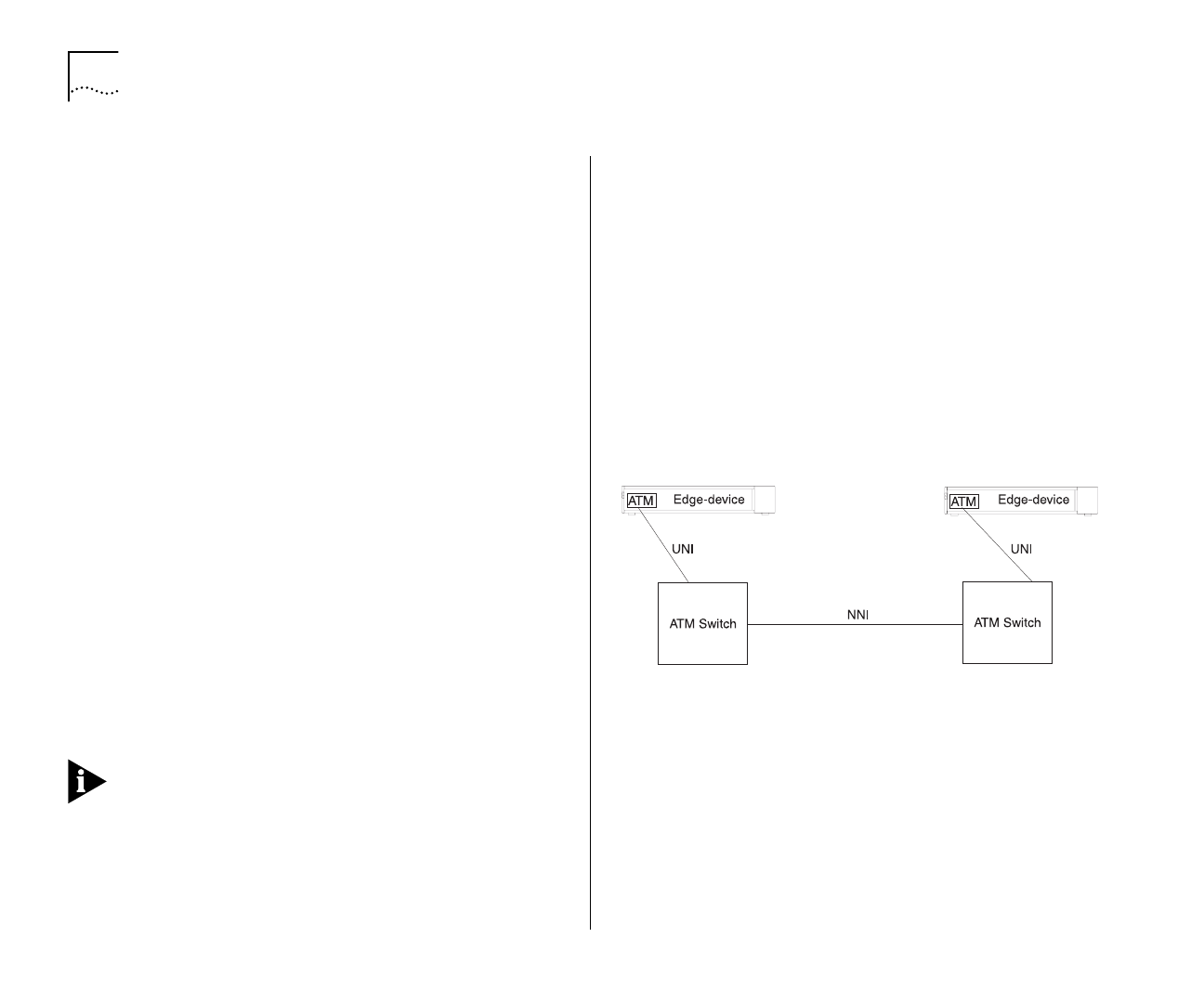
2-12 C
HAPTER
2: N
ETWORK
L
AYER
C
ONCEPTS
Switched Virtual Circuits (SVCs)
SVCs use the signalling protocol to dynamically define
connections as they are needed and to release them
when they are no longer needed.
SVCs use signalling for:
■
Connections initiated by the user/application.
■
Connections established and dropped dynamically.
■
Varied connection time.
■
Connections not automatically re-established after
network failure.
Permanent Virtual Circuits (PVCs)
The most basic connection setup requires the
definition of each connection via management. These
type of connections generally remain established for
long periods of time.
PVC attributes include:
■
Connections initiated by network management.
■
Long-term connection duration.
■
Automatically re-established after network failure.
■
Supported by MIB or other management entity.
The ATM Module does not support PVCs.
ATM Interfaces
ATM technology is implemented in ATM edge-devices
and ATM Switches.
ATM provides a
User-to-Network Interface
(UNI).
The
User-to-Network Interface (UNI) is used to connect an
ATM edge device to an ATM switch that is managed
as part of the same network.
ATM also provides a
Network-to-Network Interface (NNI)
that is typically used to interconnect two ATM switches
managed as part of the same network.
The ATM Interfaces are shown in Figure 2-8.
Figure 2-8
ATM Interfaces
The User-to-Network Interface (UNI) is managed by the
Interim Local Management Interface (ILMI)
protocol.


















